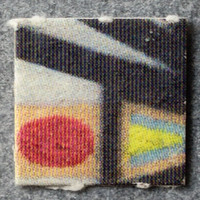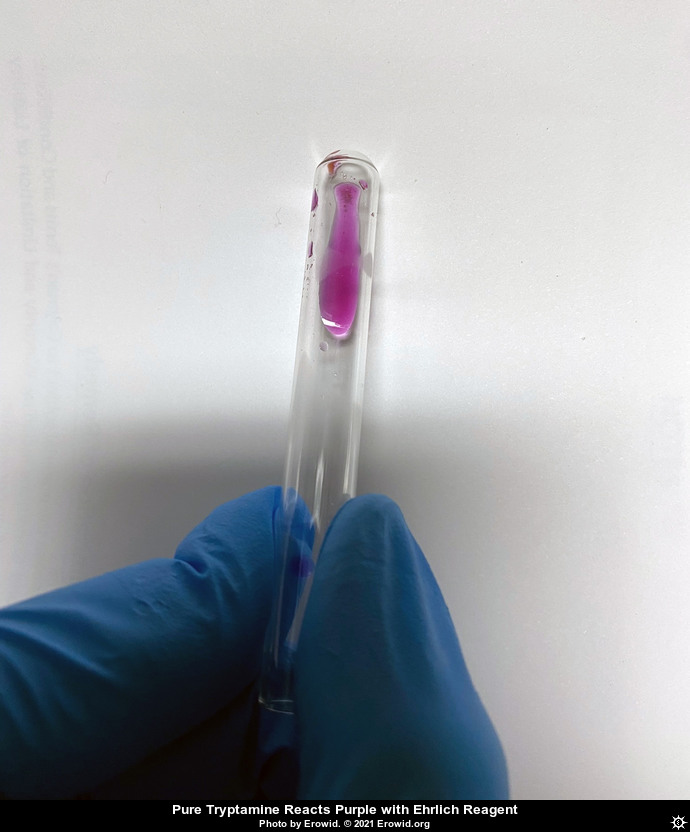REACTIONS 1P-LSD
1P-LSD, one of novel lysergamides, is known to not react with the Ehrlich reagent within the expected time frame (minutes). Despite that, some users report that their samples do in fact turn Ehrlich reagent pink / purple.
Up until now it was commonly assumed that this result might be caused by 1P-LSD degradation and partial hydrolysis to LSD while in storage, due to acidic conditions. Recently however, together with drugsdata.org and Erowid’s experts network we have established that some samples are purposely contaminated to produce false positives with Ehrlich (example: test results for a sample of 1P-LSD blotter).
This is why we advise to always double check Ehrlich reagent with the Hofmann test.
Full story via Erowid.org:
Here’s a peek into how Erowid works with a network of drug-checking experts around the world work. Just another day at DrugsData. :]
On June 30, we published the test results for a sample of 1P-LSD blotter (dd10683), confirming the presence of 1P-LSD.
On July 12, Jurek from protestkit.eu, a Polish harm reduction and field reagent specialist, inquired about this sample, noting that the Ehrlich reagent photo showed an unexpected purple reaction. Jurek pointed out that 1P-LSD isn’t known to result in a purple color in the presence of Ehrlich reagent, helping to differentiate it from LSD-25, which does cause a purple color change with Ehrlich reagent.
We discussed this with our lab and learned that there was a small GC peak they had not initially reported in the results: inactive salts and inks on blotter do not always get reported due to DEA-imposed limitations.
Given the unexpected Ehrlich reaction, we published the spectrum for the unidentified chemical and added it to the results as a second chemical present in the sample.
A chemist in the Erowid Expert Network identified the unknown chemical as tryptamine, so we ordered a lab standard for tryptamine and found that it was a perfect match via GC/MS.
Further, DrugsData’s lab did side-by-side comparison in a ceramic well plate of lab standards for 1B-LSD, 1P-LSD and LSD-25. The third of four wells is the ‘blank’ labeled MeCN (acetonitrile) which was the solvent used to dissolve each of the ergoloid standards (1B-LSD, 1P-LSD, LSD-25). Ehrlich reagent was applied to each, demonstrating that neither 1B-LSD nor 1P-LSD turn purple with Ehrlich, where LSD-25 does.
So the mystery of the the unexpected Ehlrich reaction for this 1P-LSD blotter is resolved, but the reason why someone added tryptamine to 1P-LSD blotter is still open. We all guess the goal was to be able to sell the 1P-LSD blotter as LSD-25 and that adding tryptamine to the 1P-LSD will result in reagent reactions consistent with LSD-25.
This is the first time Erowid has seen this type of adulteration of non-LSD ergoloids with the chemical tryptamine.



Start reducing harm today and order your LSD test kit
Special thanks to Erowid.
Reagents presumptively indicate PRESENCE, but not QUANTITY. To detect all ingredients and estimate potency it’s required to use an additional purity test kit. A positive or negative test result does not indicate if the substance is safe. No substance is 100% safe.